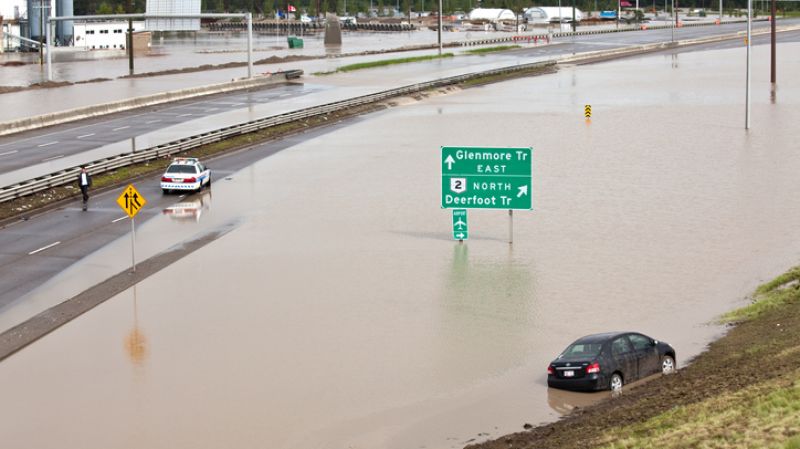How Sustainable Finance Will Take Root
The agenda is clear: decide what green finance means for Canada, bolster risk analytics, and manage the transition, without delay

By Alan Morantz
If you listen to some Canadian politicians, the financial sector considers climate risk a “flavour of the day.”
The Bank of Canada doesn’t agree: it identifies climate change as one of six significant vulnerabilities in Canada’s financial system. Major global investors don’t agree: a group of more than 500 investment firms called on Western governments to speed the shift to renewable energy and force firms to report climate-related information in their financial statements. Individual investors don’t agree: at least $30.7 trillion in funds are held in sustainable or green investments such as green bonds or sustainability-linked loans, up 34 percent from 2016.
So it seems to be settled: sustainable finance — essentially any financial service that integrates environmental, social, or governance (ESG) criteria into business decisions — is not a passing fad. But how deep are its roots? Common sense would suggest that firms face a steep learning curve. In truth, listening to a group of senior financial sector leaders, academics, and policymakers, it’s pretty clear that this is not a job for tinkerers.
What follows are themes I picked up as a fly-on-the-wall observer during the Green Finance conference organized by the Institute of Intergovernmental Relations at Queen’s University and Smith School of Business.
Change in Anatomy
The transition to green finance is a management challenge as much as a finance challenge.
Sustainable finance involves much more than just measuring outputs and reporting to stakeholders. It looks more like a corporate heart transplant. “You can’t just take the ESG paint and gloss over your current structure,” said Stephen Kibsey, an adjunct professor at Concordia University and former vice-president of Emerging Risk Management at the Caisse de depot et placement du Quebec in Montreal. “It will involve a change in your anatomy. It goes to the heart of what you’re doing.”
Once truly embedded, sustainable finance touches a wide range of corporate functions: strategy, investment, risk management, accounting, communications, human resources. It adds greater complexity to external engagement with clients, investors, suppliers, and non-governmental organizations.
Companies will need to develop the people and processes to measure the sustainability of their activities and assets. The demand for better information will not only come from outside. To develop a sustainability strategy, senior management teams will demand the data to make well-informed decisions. “From the CFO perspective,” said Pam Steer, former CFO of Payments Canada, current CPA Canada President and CEO, “I’m struggling to determine the right information with which we can advise our CEOs and boards and make good investments decisions internally within our organization. We need to work together.”
What will it take to drive this transition? As with any change management process, senior buy-in and wholesale training are table stakes. Specialists will need to be recruited for functions that are just being invented. Executive compensation will need to be aligned with ESG targets, such as a reduction in carbon intensity.
Some firms may want to re-think how they are designed to deliver value to their clients. Banking is a good example of how a sector can see climate change as an opportunity to seize rather than just a risk to mitigate. Lindsay Patrick, managing director and head of the Sustainable Finance Group at RBC Capital Markets, said that historically, the sustainability mandate at RBC was most evident in three areas: public citizenship, risk, and legal/governance. “Now it’s a function of client relationships,” she said. “All client groups are looking for advanced sustainable solutions in either products or advisory services.”
Made-in-Canada Response
We must decide what green finance means in the Canadian context, and we need data on sustainability and risk that reflects Canadian geography.
Efforts are underway in Europe to develop a “taxonomy” or classification system for sustainable activities. This taxonomy will shape future regulations that could affect how the Canadian financial sector operates. “We can’t let Europe dictate taxonomy,” said one speaker.
A meeting in January 2019 with European Union officials was revealing. As one participant recalled, “The EU said, ‘We don’t want your oil anymore, but we would really like your aluminum and would like it to be manufactured with hydropower.’ There was some dissatisfaction with, yet again, the colonialism from Western Europe. Because they have no natural resources left, they’re looking to the colonies their resources. History is repeating itself.”
For the Canadians in the room that January day, it was a turning point. They left convinced that the finance technocrats defining what is “green” will make no allowance for the fact that Canada is a natural resources-intensive economy. “We have 600 communities that are completely dependent on the forestry industry,” said Peter Johnson, chair of the Canadian Standards Association Task Group for a Green Taxonomy for Canada. “The protocols will be imposed on us and our Canadian companies will be penalized. Fossil energy, forestry, mining, even forms of renewable energy like bioenergy will be excluded.”
The CSA is now leading the charge on developing a made-in-Canada taxonomy for sustainable development. It is hoped that this can be used during negotiations on international standards. “With the standard we create, we can be at international ISO table and say, This is what green means to Canada.”
It is also clear that Canada can no longer rely on foreign sources for risk data analytics and modelling. Recent extreme weather events have exposed this vulnerability. The Fort McMurray wildfire in 2016 was never modelled as a risk, said Craig Stewart, vice-present of federal affairs for the Insurance Bureau of Canada. “When flooding happened in Beauce, Quebec, all the homes that were flooded were considered low risk by our industry. Why? Because all the flood models used by the country’s insurers are from U.S., Europe, and the UK. The UK model didn’t account for ice jams because they don’t experience them in the UK.”
At present, national climate models cannot be downsized to a regional basis and factored into existing models that price risk. Greater domestic risk modelling capacity would go some way to addressing this shortcoming. Indeed, Canada’s Expert Panel on Sustainable Finance recommended the creation of a Canadian Centre for Climate Information and Analytics. Its fate awaits the next federal government.
Partnering Not Politicking
Public-private partnerships are essential to address climate change challenges.
Canadian businesspeople learned from their European counterparts the importance of working across industries and with governments. Public-private partnerships are essential since no single actor can hope to make a difference. These days, cooperation within the financial sector is a lot easier than collaborating with most provinces.
“The big elephant in the room is politicisation of the issue,” said Stewart of the Insurance Bureau of Canada. “It puts us in awkward place as an industry. It’s a challenge to navigate this space because companies don’t want to upset governments.”
One example of an industry-government partnership is in the U.S., where there is a novel initiative among insurers, municipalities, and the federal government that aims to de-risk vulnerable communities. It involves a point system that rewards activities that bolster environmental resilience. If a community invests in municipal bonds in order to shore up its flood defences, for example, residents in that community see their insurance premiums reduced. “In Canada we’re not even close to having this conversation,” said Stewart.
Another way the federal government can boost sustainable finance is to clarify fiduciary duty. A great many investment managers believe that to integrate ESG factors into their decisions is to ignore their fiduciary duty. A host of legal judgments and public studies say otherwise — that it would be irresponsible not to account for ESG issues such as stranded assets. A clear statement from the federal government and changes to the Bank Act would drive home this point.
High Stakes
It is inevitable that new global financial regulations are on the way. Canada and its resource-driven economy can find itself in a vulnerable position. The country cannot afford to go it alone and risk being labelled a bad actor.
“That would be devastating on our financial markets and economy as a whole,” said Pam Steer. “Our pension plans and banks are growing internationally, not domestically. If we’re labelled as a bad actor as a nation, that’s bad. We need to integrate internationally and influence where we can. We have to be part of the conversation or risk being excluded from that conversation.”
This urgency has to be felt by individual firms as well. Andrew Chisholm, a member of Canada’s Expert Panel on Sustainable Finance, reminded his conference colleagues that significant climate benchmarks are looming in 2030. If we’re going to achieve these targets, he said, “investments will have to be made today. The cake has be baked during our careers. And I don’t think the financial sector gets that.”
Alan Morantz is editor of Smith Business Insight.





